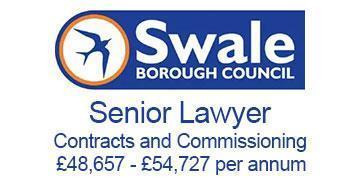While European policymakers debate whether to delay or dilute sustainability reporting regulations under the so-called ‘Omnibus’ proposal, the financial markets are setting the pace on environmental, social and governance (ESG). The direction of travel is clear: capital is aligning with credible ESG performance. For businesses, this means sustainability must be embedded in governance and strategy, not just treated as a reporting requirement. This is simple corporate housekeeping and good governance and, if done well, can be a differentiator in the eyes of investors and business partners.

As legal professionals, solicitors may be tasked with advising businesses on ESG. Advisers should take the opportunity to steer them away from considering compliance and reporting considerations only, and towards an approach that integrates ESG into risk management and decision-making.
Shifting from reporting compliance to an integrated strategy
The EU’s Corporate Sustainability Reporting Directive (CSRD) and Corporate Sustainability Due Diligence Directive have dominated headlines in the ESG communities for some time.
The first wave of CSRD reports was closely analysed by many audit and advisory firms, such as PwC, Forvis Mazars and others. It looks like the length of sustainability reports increased compared with pre-CSRD reporting, but comparability of information between companies was still not an easy task. A longstanding issue with non-financial reporting is that it is unstandardised. It remains difficult therefore for users to make comparisons of sustainability reports across companies and sectors, especially the financial markets and investors.
In addition, the CSRD’s stringent reporting and assurance demands triggered anxiety among smaller companies that would have been required to report in the next waves. Some of these companies may now find themselves potentially out of scope under the Omnibus revisions. However, many that began preparing for CSRD saw benefits regardless of whether they will ultimately be required to publish a CSRD report. By identifying their material ESG issues, developing a strategy to address them, and putting oversight and governance structures in place, they now better understand their impact, risk and opportunity landscape and have strengthened internal alignment on these topics. Even if regulations and reporting frameworks change, the value of an integrated ESG approach remains. A clear, integrated ESG strategy would serve any company well in navigating any regulatory and reporting developments that lie ahead.
Market is setting its own expectations
One compelling reason for a company to have a solid ESG approach is financial. Norges Bank Investment Management, one of the world’s largest funds with a stake in more than 8,500 companies worldwide, recently made clear its ESG expectations of portfolio companies. It will require, as a minimum, actions including board-level responsibility for sustainability and transparent ESG reporting.
These expectations are contrary to the direction of the Omnibus proposal to weaken ESG reporting requirements. The European Central Bank supports the Commission’s holistic approach to enhancing European competitiveness, but has cautioned that it is important to strike the right balance. This ensures that the benefits of sustainability reporting for the economy and for the financial system are retained, but also that the reporting requirements are proportionate. Gaps in ESG reporting could increase risk for the economy and investors. A comprehensive understanding of ESG risks and opportunities will benefit not only companies, but also market participants and policymakers by facilitating informed and strategic decision-making.
Many asset managers and institutional investors increasingly see ESG performance as a proxy for good governance and resilience. This is not merely sentiment; it is strategic. Companies that cannot articulate how they are managing their ESG risks and opportunities risk losing access to capital or business partnership opportunities. While regulators are scaling back, the market is setting the bar higher.
Wherever you operate, ESG strategy is good governance
CSRD may apply to UK companies with a presence in the EU. Concurrently, in the UK the ESG reporting landscape is developing with mandatory Task Force on Climate-related Financial Disclosures reporting for large companies; and UK government backing for the International Sustainability Standards Board in the creation of the UK’s Sustainability Reporting Standards.
For solicitors advising clients in practice or companies in-house, the message regarding ESG should be clear: regardless of jurisdiction and shifting regulatory environments, ESG should not be solely approached as a compliance exercise. Rather, it is a matter of good corporate governance and sound risk management, and a potential strategic differentiator.
Ultimately, thriving companies will not be those awaiting regulatory certainty; indeed, the only certainty in this landscape is constant change.
A good starting point would be to conduct a materiality assessment and understand the most relevant ESG risks and opportunities. While CSRD and other ESG reporting guidelines can inform the process of deciding how to conduct a materiality assessment, there is no one-size-fits-all format. The process and outcomes should be appropriate and proportionate to the company’s size, sector and stakeholder landscape.
In-house solicitor Natasha Bouwman is corporate and ESG lead at online auction platform Catawiki































No comments yet